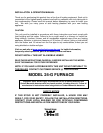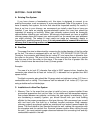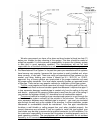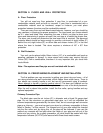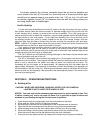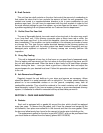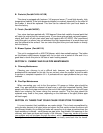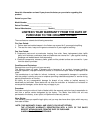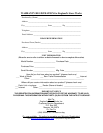
SECTION II: FLOOR AND WALL PROTECTION
A. Floor Protection
You will not need any floor protection if your floor is constructed of a non-
combustible material such as brick or concrete. If your floor is constructed with a
combustible material such as hardwood, carpet or linoleum, you must place
protection between the stove and the combustible material.
There are many floor and wall board manufacturers, however, and you should be
very cautious in choosing the proper protection. The type board you choose should
be U.L. rated and listed. After examining the area in which you plan to place your
stove and determining it requires a board, the next step is to select the proper size.
The stove you choose will determine the size board that is required. The approved
protector board should be large enough to provide a minimum of eight inches (8”)
behind the unit, eight inches (8”) on either side and sixteen inches (16”) in the front
where the door is located. This stove requires a minimum of 48” x 60” floor
protection.
B. Wall Protection
Your unit can be placed within fifteen inches (15”) of a combustible wall such as
paneling, wallpaper or drywall. In some areas local codes may require thirty-six
inches (36”) from a combustible, therefore it is very important that you check with
local officials.
Note: Flue systems and flue pipe are not furnished with the unit.
SECTION III: FREESTANDING PLACEMENT AND INSTALLATION
The first problem you may encounter is getting your stove into your home -- all of
our stove products are well constructed, which makes them rather heavy. Three to
four adults can normally handle a unit, but we still recommend using a handcart.
Never attempt to handle a heating product alone!!! The door and firebrick can be
removed to lighten the unit; if this is done please make a note of the brick placement.
After the unit is placed into position, install the flue collar, spring handles and any
optional equipment.
Chimney Connector Pipe
The black pipe must be six inches (6”) in diameter and at least 24 gauge steel
pipe. Do not use aluminum or galvanized steel pipe, as it will not withstand the
extreme temperatures generated by the stove. Also, do not use single wall connector
pipe as a chimney -- you must connect your stove to a chimney comparable to those
listed in Section I of this manual. The crimped end of your pipe should be inserted
into the flue collar and, by doing this, all the pipe will be reversed. If you use this
method any creosote will run back down the inside of your pipe and not out of the
joints onto your stove. As a safety precaution, all joints should be sealed with high
temperature silicone (AC-RTV3) and secured with three sheet metal screws.



